Chances are if you’ve ever eaten a really hot sauce, you’ve probably encountered habanero pepper as an ingredient. These popular peppers are used the world over to add both fruity flavors and blasts of fiery heat to many different sauces and dishes.
A Habanero is a hot chili pepper that is closely related to the Scotch bonnet pepper. Habaneros are among some of the hotter peppers and are most commonly consumed when they are orange or red. Habaneros are usually between 2-6 cms long and measure between 100,000 and 350,000 SHU.
Like many peppers, Habaneros are easy to grow with their seeds taking about 7 to 10 days to germinate and the pepper plant taking 100 to 120 days to fruit. So, whether you prefer to grow your own fruits and vegetables, or your local grocer does not carry Habaneros, you can grow your own at home.
Read on to learn more about habaneros and how you can grow your very own pepper patch!
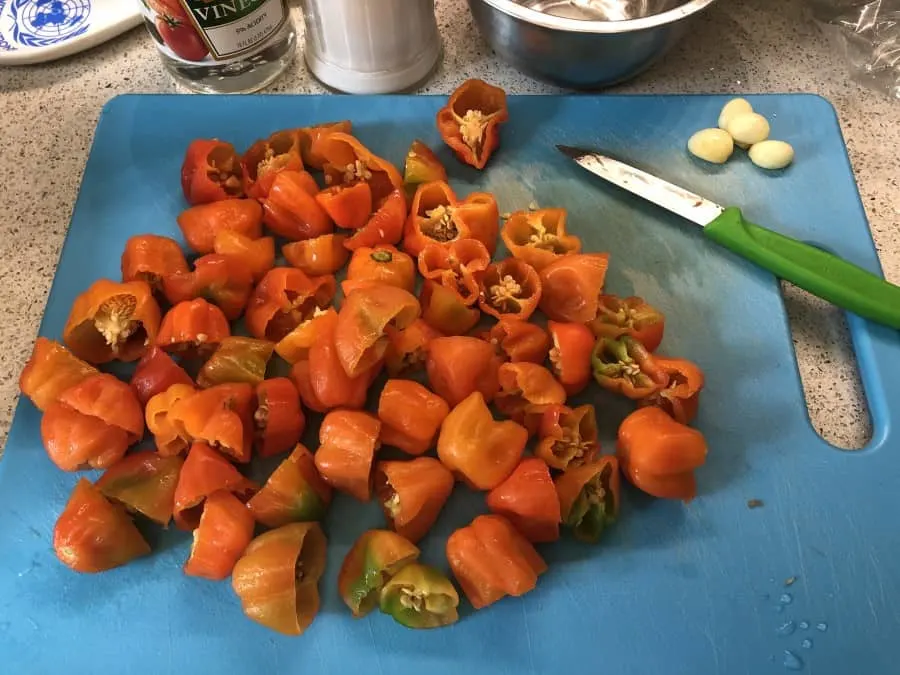
Basic Facts about Habanero Peppers
Habanero peppers are among the most popular and most recognized types of hot chili peppers. Here are a few basic facts about these mouth bombs:
Where do Habanero peppers come from?
While Habanero peppers are sometimes referred to as Chinese chili peppers (Capsicum Chinense), these peppers originate from the Amazon and Mexico. Habanero peppers have been foraged and cultivated by Indigenous people in these regions for thousands of years. Like many other spices, these peppers soon found their way across the globe as a part of the international spice trade. There are many types of Habanero peppers, with over a hundred cultivars of Habanero pepper plants found across the world.
How many Scoville units do Habanero peppers have?
The Habanero measures between 100,000 and 350,000 units on the Scoville scale, which is used to measure how much heat a pepper produces. Even though Habaneros rank high in Scoville units, they aren’t even close to some of the hottest peppers in the world, like the Carolina Reaper, which measures approximately 2.2 million Scoville units. That being said, Habaneros pack a lot of heat and should not be messed with!
What does a Habanero pepper look like?
Habanero peppers are short, stumpy peppers with a shape like a human heart. These peppers are wide at the base where they attach to the plant and taper to a point at the far end. On average, they are between 2-6 cms long.
What does a Habanero pepper taste like?
Habanero peppers are extremely hot, with notes of both floral and fruity flavors. The inherent sweetness in a Habanero can often be brought to the forefront of its flavor profile when cooked.
How much does a Habanero pepper weigh?
Habanero peppers are relatively small chili peppers, weighing between 12 and 18 grams each. However, do not let their small size fool you, as these peppers can pack a spicy wallop even in a small package.
What colors do Habanero peppers come in?
Habaneros are green when they first fruit and as they mature their color changes to orange or a slight reddish coloring which indicates they are fully ripe. There are also sub species of Habanero peppers with interesting colors ranging from purple, white, brown, and even yellow. Thanks to carefully selective breeding, there are many different cultivars of Habanero that are grown worldwide.
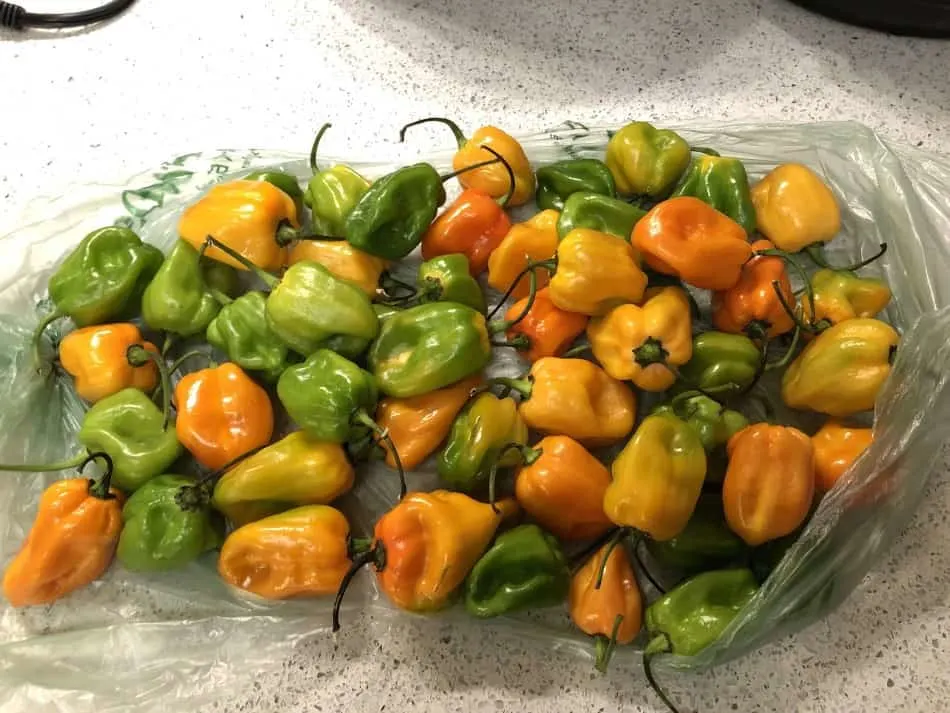
Here are some of the common Habanero colors and the cultivars (creating a plant by selectively breeding different species of plants, in this case different types of peppers) that create them:
| Habanero Colors | Habanero Cultivars in That Color |
| Red | Caribbean Red, Dragon’s Blood, Fatalii Red, Rocotillo, Solar Red, West Indian Red, Carolina Reaper, Senegal |
| Orange | Mild Habanero, Orange Habanero, Habanada, Brazil Orange Habanero, Habanero Francesca, Carmine, Bonda ma Jacques |
| Yellow | Aji Yellow, Amazon, 7 Pot Yellow, Burkina Yellow, Devil’s Tongue, Grenada Seasoning, Limo, Primo Yellow |
| White | Habanero Giant White, Snow White |
| Brown/Chocolate | 7 Pot Gigantic Chocolate, Black Cayman, Black Stinger, Habanero Black, Jamaican Hot Chocolate, Moruga Scorpion Chocolate |
| Purple | Condor’s Beak, Cajamarca |
| Peach | Trinidad Perfume, Pumpkin, Jay’s Peach Ghost Scorpion, Habanero Peace |
Cooking with Habanero Peppers
It may seem daunting for new cooks to work with Habaneros or other spicy peppers since a little too much Habanero can make an entire dish too spicy to eat. As with many kinds of super hot chili peppers, a little goes a long way when incorporating habanero peppers.
Here are a few key facts about cooking with habanero peppers and how to get the most out of them in the kitchen when you start working with them:
What is Habanero’s flavor good for?
While Habaneros are best known for their scorching heat, these peppers also have a citrusy and tropical flavor profile that makes them well-suited for fruit-based hot sauces and chutneys. Habaneros are also known for having a bit of a smoky flavor.
Can you eat Habaneros raw?
While it is possible to eat raw Habanero peppers, it’s not generally considered a good idea for most people. These peppers have an intense burning effect both in the mouth and after being passed through the bowels.
What are Habaneros used for cooking-wise?
Habaneros are commonly used in many kinds of hot sauces and marinades. They are also incorporated into sweet salsas and chutneys to add a heat that compliments the naturally fruity flavor of the other ingredients in the sauce and the peppers themselves.
How do you cook with Habanero peppers?
To cook with Habanero peppers, the interior membrane and seeds are often removed to reduce the pepper’s heat to a more tolerable level. It is important to use extreme moderation when adding Habaneros to dishes and use proper handling precautions such as gloves. Never touch your face, eyes, or other parts of your body after handling Habaneros before you’ve had a chance to wash up.
What are good substitutes for Habanero peppers?
The easiest substitutions to find for Habanero peppers when cooking are Serrano peppers and Jalapeño peppers. Neither Serrano nor Jalapeño peppers will contain the same amount of heat as a Habanero, but both will help replicate the citrusy and fruity flavors present in Habanero peppers. You will just need to use more peppers for the same level of spice and heat.
How many Habaneros should be used while cooking?
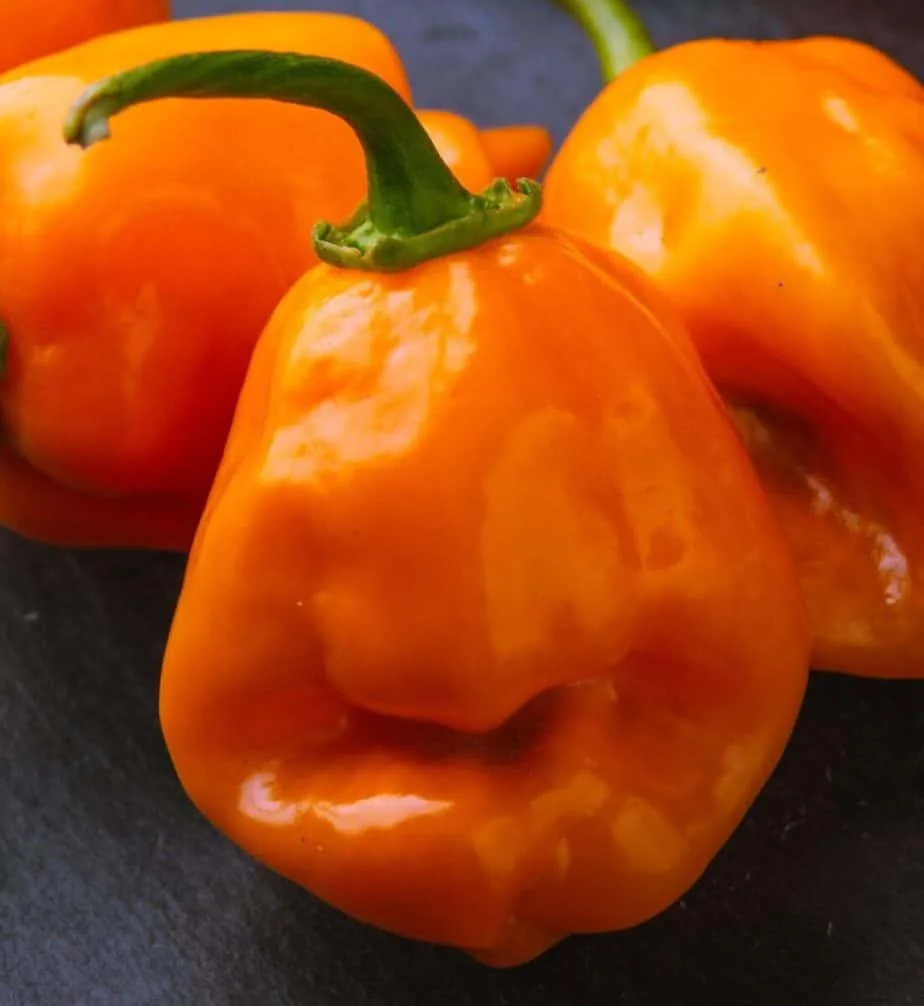
A single Habanero pepper (or even just a portion of one) is usually sufficient to add to most dishes or sauces to increase their heat level. Using more than one Habanero can usually render a dish inedible for most people who are unaccustomed to high levels of heat in their food.
What supplies are needed for cooking with Habanero peppers?
You should wear thick, protective rubber or plastic gloves along with safety goggles (if you want to be extra careful) or glasses when working with Habanero peppers. This might seem like overkill, but you will not think so if you ever end up absentmindedly rubbing your eyes—or scratching a delicate area—after having Habanero on your hands. Washing your hands thoroughly with dish soap and water is also essential to remove the capsaicin from your hands, even if you used gloves.
When cooking with Habanero peppers, always remember to keep some cold milk handy to help deal with any potential pepper burns you encounter while prepping the peppers. Cooking Habanero peppers while unprepared has left many a home cook in some serious pain.
Cuisines that Use Habanero Peppers
Habanero peppers are most often associated with both Latin and northeastern Indian cooking. However, Indian cooks also tend to use Bhut Jolokia peppers and other types of chilies as well. In contrast, Mexican cooks integrate other hot peppers such as Jalapeño, Serrano, Poblano, and Hatch peppers.
Habanero peppers are also sometimes used in Caribbean cooking, though the Scotch Bonnet is typically preferred over Habaneros.
Habanero peppers may feature prominently in these cuisines, but they can be incorporated into many kinds of dishes and meals from all over the world, even in dishes or cuisines where hot peppers aren’t usually a star ingredient.
These are just a few ways that you can use Habanero peppers in cooking
In jams and jellies
Sweet and spicy is a perennial favorite flavor combo. Adding Habaneros to a strawberry jam or other fruit preserve can give them a fiery bite that makes them go well with cream cheese crackers or other appetizer-type dishes. Habaneros can help cut the excessively sweet taste of some preserves, and the heat of the pepper also helps make these sweet condiments suitable even for more savory dishes.
In Caribbean jerk recipes
Caribbean jerk is a spice mix well known for being hot, so adding some Habanero to the mix can be a great way to add some extra punch, especially if you don’t have any Scotch bonnets on hand. Habanero is a good choice with either jerk chicken or grilled jerk fish.
In chutneys
Chutney is a spicy sauce condiment, usually made of fruits or vegetables and spices, used most often in Indian cuisines. Outside of India, chutneys are sometimes chunky fruit salsas, typically made of diced mangoes, pineapple, or other tropical fruits, and hot peppers are usually added to chutneys to give them some fiery flair. Habaneros are a great choice to add spice to chutneys since these peppers already have a fruity flavor profile.
In soups and stews
Adding Habanero to a soup or a stew can be a good way to dilute its powerful flavor, while adding necessary heat to the broth. These dishes also lend themselves well to soothing condiments like crema that can help cut down on the hot bite of chili peppers.
With roasted meats
Pot roasts and other roasted red meats can be rich and heavy, but spicy peppers help cut the fat and lighten the dish. Habaneros can also be added to roasted meats in the form of a condiment such as a sauce or chutney, rather than cooked with the meat itself, which can sometimes be overpowering if too much Habanero is used.
In fiery salsas
One way that habaneros feature most commonly in Mexican or Latin cuisine is in salsas, which are usually made out of a mixture of peppers and tomatoes (and sometimes onion, garlic, and other ingredients). Habaneros add an extra level of heat to salsa compared to other milder peppers such as Jalapeño or Serrano peppers.
When you first begin working with Habanero peppers in your cooking, it’s a good idea to start with a small amount and then work your way up based on your tolerance for heat in dishes. This can prevent you from ruining a dish with too much chili and then becoming discouraged from using these hot peppers in your cooking in the future.
How Hot are Habanero Peppers?
You’ve already found out that Habanero peppers are really hot with between 100,000 and 350,000 units on the Scoville scale, but what does that mean in terms of taste? Well, simply put, it means that it isn’t recommended to eat Habanero peppers raw or in any large amount. These peppers are best used very sparingly since they are so powerful.
Here are some other interesting facts about how hot Habanero peppers are and how this heat can potentially affect your health:
What color of the Habanero is the hottest?
Orange Habanero peppers are the hottest and green un-ripe Habaneros are milder. Orange Habanero peppers are fully ripened and have had time to store up a bunch of capsaicin while it has been maturing. The more capsaicin, the hotter the pepper, so mature peppers are generally hotter.
Are Habaneros bad for your stomach?
While hot peppers can lead to an over-production of mucus in the stomach lining and can even lead to nausea or vomiting in some cases, they are not known for causing any lasting damage to the digestive system, even if consumed regularly.
Are Habaneros dangerous to consume?
You might feel like your mouth is going to melt off if you eat a raw Habanero but never fear—outside of some uncomfortable burning if you accidentally rub your eyes or other delicate areas on your body, Habanero peppers won’t cause any lasting damage. The burn is similar to other chili peppers, and can be relieved using some handy remedies.
Do Habaneros burn the skin?
Habanero peppers can burn the skin, mouth, or eyes if they come in contact with these areas of the body, and this burning sensation can be both overwhelming and painful. The best way to stop an active chili burn on the skin is to remove the chili oil from the skin with rubbing alcohol before dousing the area in cold milk to cut the burning. For mouth burns from raw chili, swishing cold milk in the mouth will help.
Habanero peppers may be an extremely hot chili pepper, but that doesn’t mean that they’ll actually hurt you. Outside of some temporary pain and discomfort, eating peppers has mostly been shown to have positive health benefits.
How to Grow Habanero Peppers
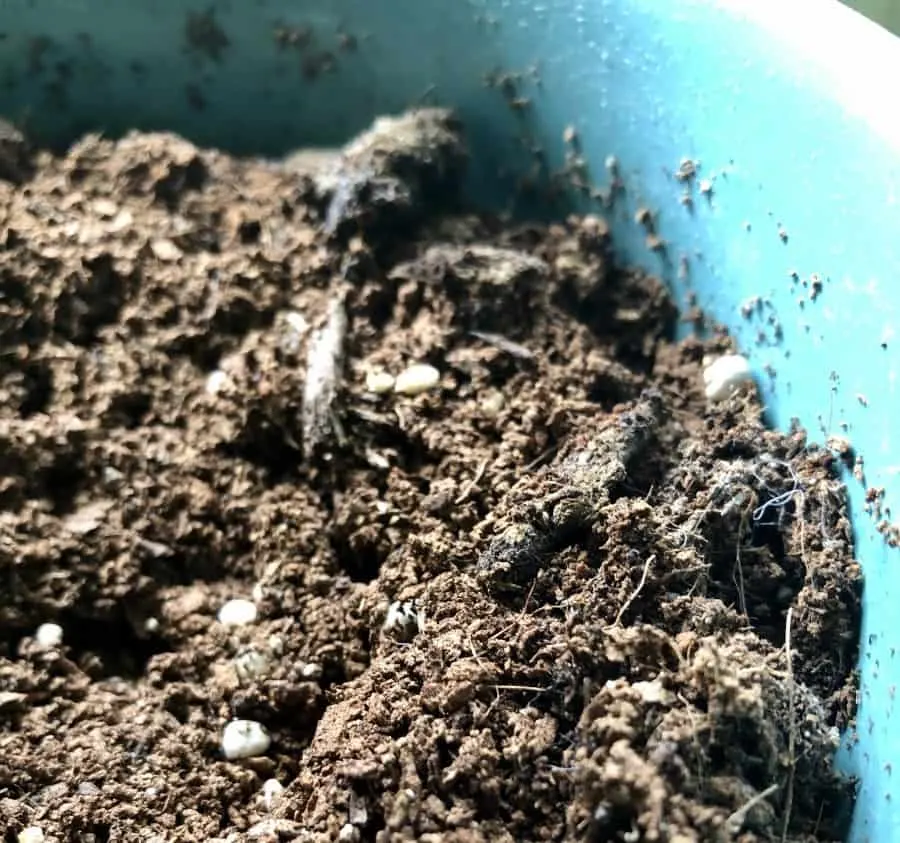
So, you want to start cooking with Habanero peppers, but your local grocery store or farmers’ market does not keep them in stock. No problem! Like other hot peppers, Habanero peppers are easy to grow in many areas of the world and are a popular home crop in the summer months both for cooking and for canning or preservation.
Here are some common questions about growing Habanero peppers:
Are Habanero peppers difficult to grow, and how do they grow best?
Habanero peppers are quite easy to grow, especially in climates that have a long, warm summer. Like most chili plants, Habanero peppers need lots of direct sunlight and heat for optimal growing conditions. But even gardeners in temperate climates can grow Habaneros quite easily during the summer months and even in early autumn in warmer places.
How long do Habanero peppers take to grow?
One challenge with growing Habanero peppers is that these fruiting plants take around 100 to 120 days to bloom. As a result, to grow Habanero peppers most efficiently, it’s usually a good idea to start Habanero seeds indoors and grow them inside for several weeks before moving them outdoors when the weather turns warm.
What is the best time to plant Habanero peppers outdoors?
The best time to plant Habanero peppers outdoors is around eight to ten weeks after germination when absolutely all chance of frost and other cold weather has passed. Young pepper plants are extremely sensitive to cold temperatures, and any dramatic fluctuations in temperatures can cause plants to die.
Are Habanero peppers self-pollinating?
Habanero plants can self-pollinate, but cross-pollination is preferable to increase the number of fruits and seeds produced by the plant and the quality of the peppers themselves.
Can Habanero peppers be grown in pots?
Habaneros can be grown in pots. Habanero peppers, like other hot peppers, have a relatively shallow root system and don’t grow large or tall, making them a good choice for growing in a pot. Starting Habanero plants in pots indoors also makes it more convenient to move them outdoors once the weather becomes warmer. Potted Habaneros should be placed close together to ensure strong cross-pollination.
How big do Habanero peppers grow?
Habanero pepper plants are a relatively short plant, with the tallest specimens only growing to around four and a half feet tall, and most average Habanero plants grow closer to two feet tall. This makes them both very portable in potted planet setups and easier to harvest for those gardeners with limited mobility.
How many Habanero peppers do you get per plant?
If a Habanero pepper plant is grown in optimal growing conditions, it can produce up to 200 individual peppers per plant per growing season, which equals around six to seven pounds of chili peppers!
Are Habanero peppers annual or perennial?
Habanero peppers are perennial, but due to their sensitivity to low temperatures, you need to bring them indoors by the first frost of the season. After the last frost of winter or spring you can transplant them outdoors again and enjoy their spicy pepper pods once again.
Five helpful tips for how to grow better Habanero peppers at home:
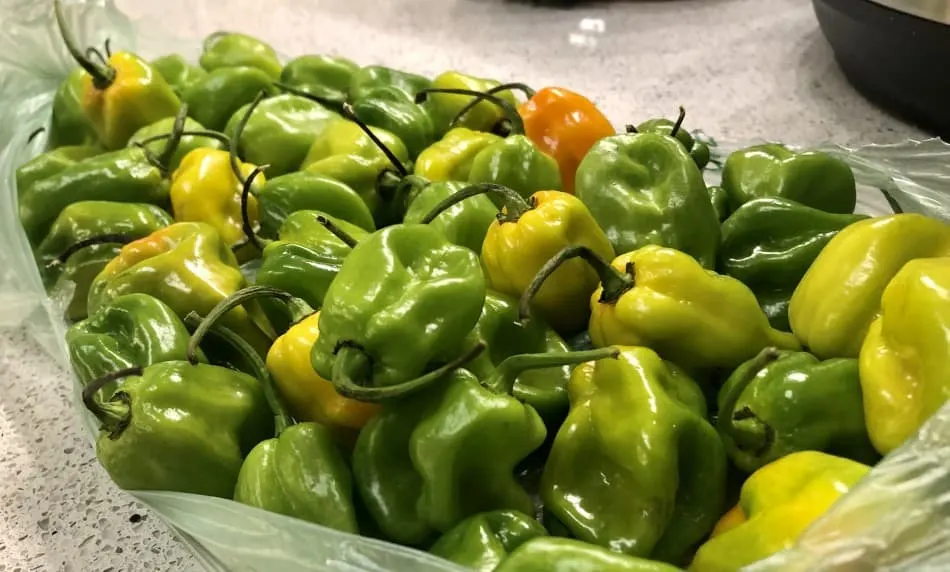
Soak pepper seeds before planting
Soak your Habanero seeds for 12 – 24 hours in warm water before planting. The soaking helps jumpstart the seeds’ process of sprouting giving it a better chance of fully germinating. Do not soak your seeds for more than 24 hours or they will start decomposing.
Use a heat mat to increase success with germination
Heat mats used under seed trays are also a good idea for hot pepper seeds like Habaneros. It is important to be patient—unlike other types of plants that will be sending up a sprout within only a week or two, Habanero plants can take as long as a month or more to germinate.
Pepper plants should be fertilized once they begin to produce fruits to increase their productivity
Be sure to choose a fertilizer that contains the right nutrient mix designed to produce fruits in plants rather than foliage, as these often involve different ratios of essential elements like potassium and nitrogen. We usually recommend using a 5-10-10 mix for best pepper growth.
Pick peppers often to increase the number you get
The more peppers you pick from your Habanero pepper plant, the harder the plant works to produce more fruits and flowers to replace those that are lost. This can be a taxing process for the plant, so be sure to provide plenty of plant food and water to prevent attacks from disease or other pests.
Be prepared for pest control
You might think that no insects would dare to mess with a hot pepper plant, like a Habanero, but you would be wrong. Aphids, flea beetles, and other pests can be controlled through either organic means such as neem oil or non-organic commercial pesticides. However, commercial pesticides have a bad reputation for damaging pollinator populations. Using non-organic pesticides is also not a good idea on edible plants with thin skin like peppers.
Soil quality is key
Hot peppers like Habaneros prefer a rich, loamy soil that is friable, loose, and thick with compost and other organic matter. This gives pepper plants the nutrients they need to produce fruit and helps emulate their native soil. Commercial potting soil is usually rich in nutrients and a good choice for peppers being grown in containers, but topsoil mixed with equal parts compost and peat moss is a good homemade mixture for growing peppers in the ground.
For gardeners interested in getting involved with hot sauces or other pepper products, Habaneros can be a great introduction to growing hot peppers.
How to Harvest and Store Habanero Peppers
Once you grow your Habanero peppers, the next step you’ll need to master is how to harvest and store these colorful and fiery fruits. Follow the tips below to get the most out of harvesting and storing your Habaneros:
When do you pick Habanero peppers?
Habanero peppers should be picked as soon as they’ve ripened or changed color (green typically indicates immaturity, while colors such as orange or red mean the pepper is ripe). If peppers are being harvested for their seeds, the peppers can be picked and left to dry off the plant, or they can be left to dry on the plant, and the seeds can be collected later.
Will Habanero peppers ripen off the plant, and how long does it take?
Habanero peppers will ripen once they’ve been picked from the plant, which means that you can pick them while they’re still green and end up with ripened habaneros. If exposed to sunlight and air, a Habanero pepper should ripen and color in a few days.
Habanero peppers can be picked while they are still green, and they may not pack quite as much heat at this stage in their development. However, Habanero peppers that are picked will continue to ripen off the plant. I tried this out myself by ordering a pound of Habanero peppers from the grocery store, which arrived green as can be. I left the peppers on the counter for two to three days and by that time they turned a brilliant orange.
What is the best way to store Habanero peppers?
Habanero peppers should be washed individually and laid out to dry on paper towels before being stored in a zip-lock storage bag. The peppers can then be left in the fridge or frozen in the freezer.
How long do Habanero peppers last?
Fresh Habaneros only last around a week or two in the fridge, so they must be either used quickly or frozen for later use. Frozen Habanero peppers can last up to ten to twelve months.
Habanero peppers that are cooked into jams and jellies can last up to twelve months if hermetically sealed while canning, but only last a few weeks once opened. Freezing Habaneros is the best way to store them if you get a bunch at once.
It is a good thing that Habanero peppers store well since you don’t need much per recipe, and each plant produces hundreds of them. Knowing how to store and harvest these peppers properly means that you’ll get the most out of each Habanero harvest.
Closing Thoughts
The heat associated with Habaneros may be a turn-off for some gardeners and cooks. Still, for those willing to sweat a little who don’t mind pampering their pepper plants for some delicious pay-off, they will be surprised at how versatile this spicy pepper can be in the kitchen. Not only that, but Habanero peppers are a great choice for people who are looking to get started growing their own hot chili peppers at home.
